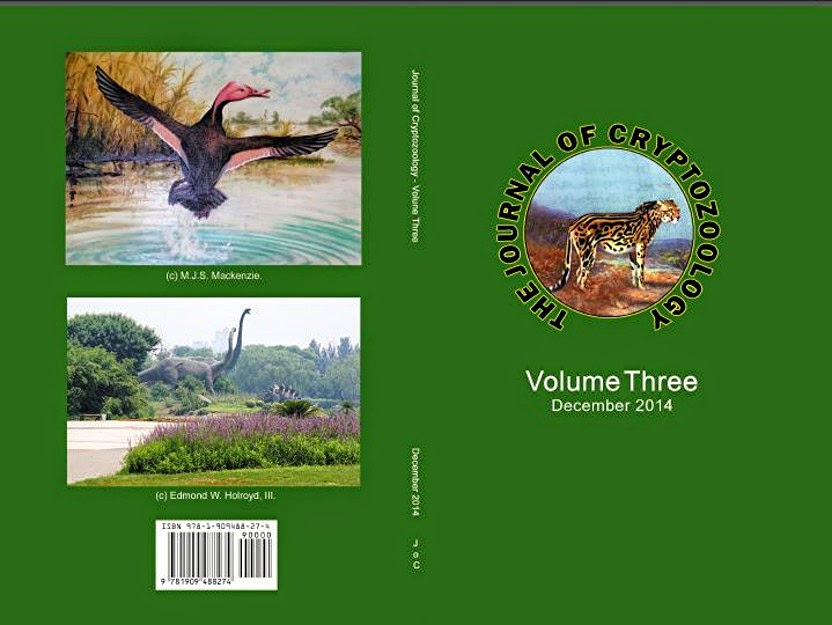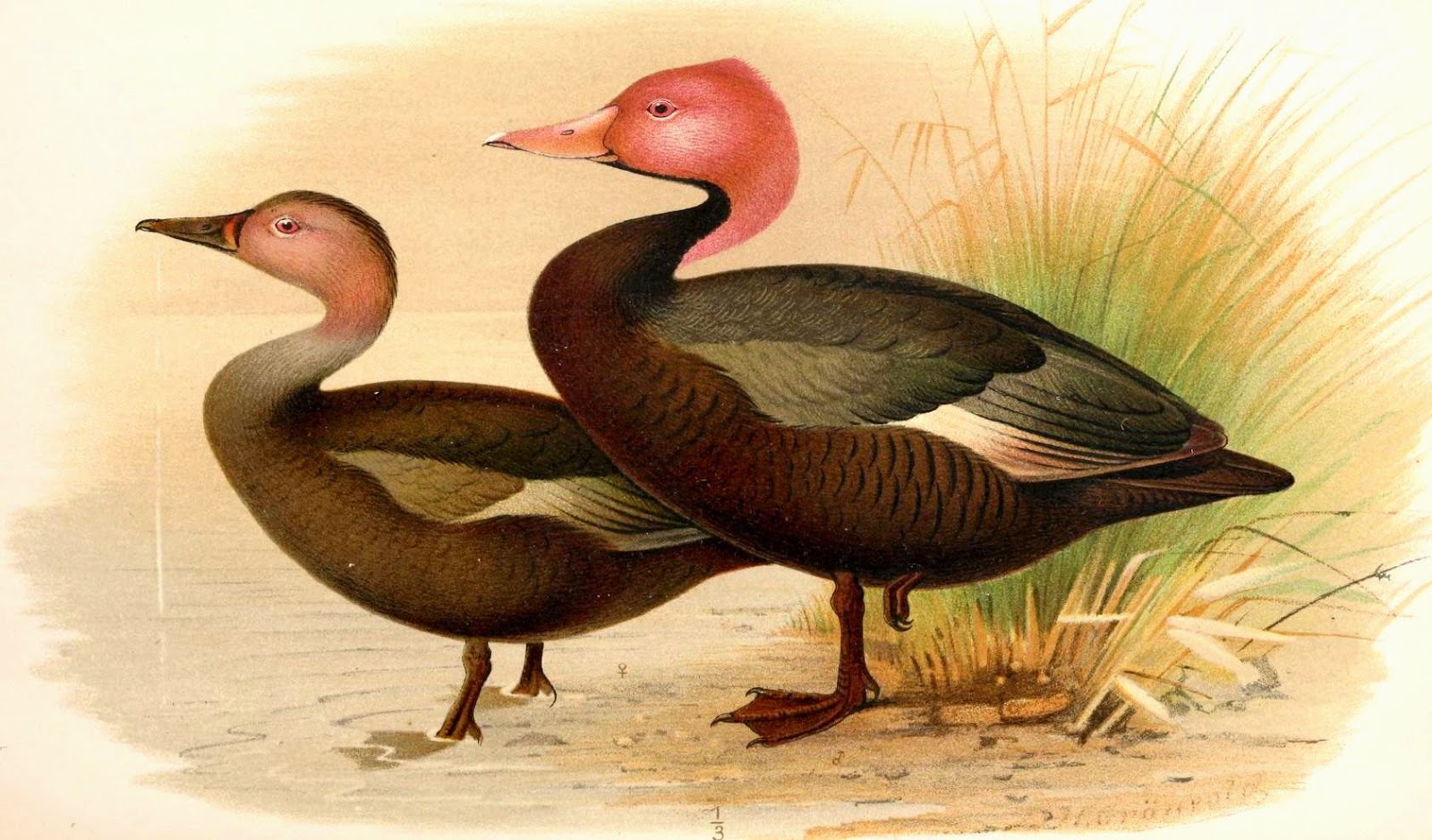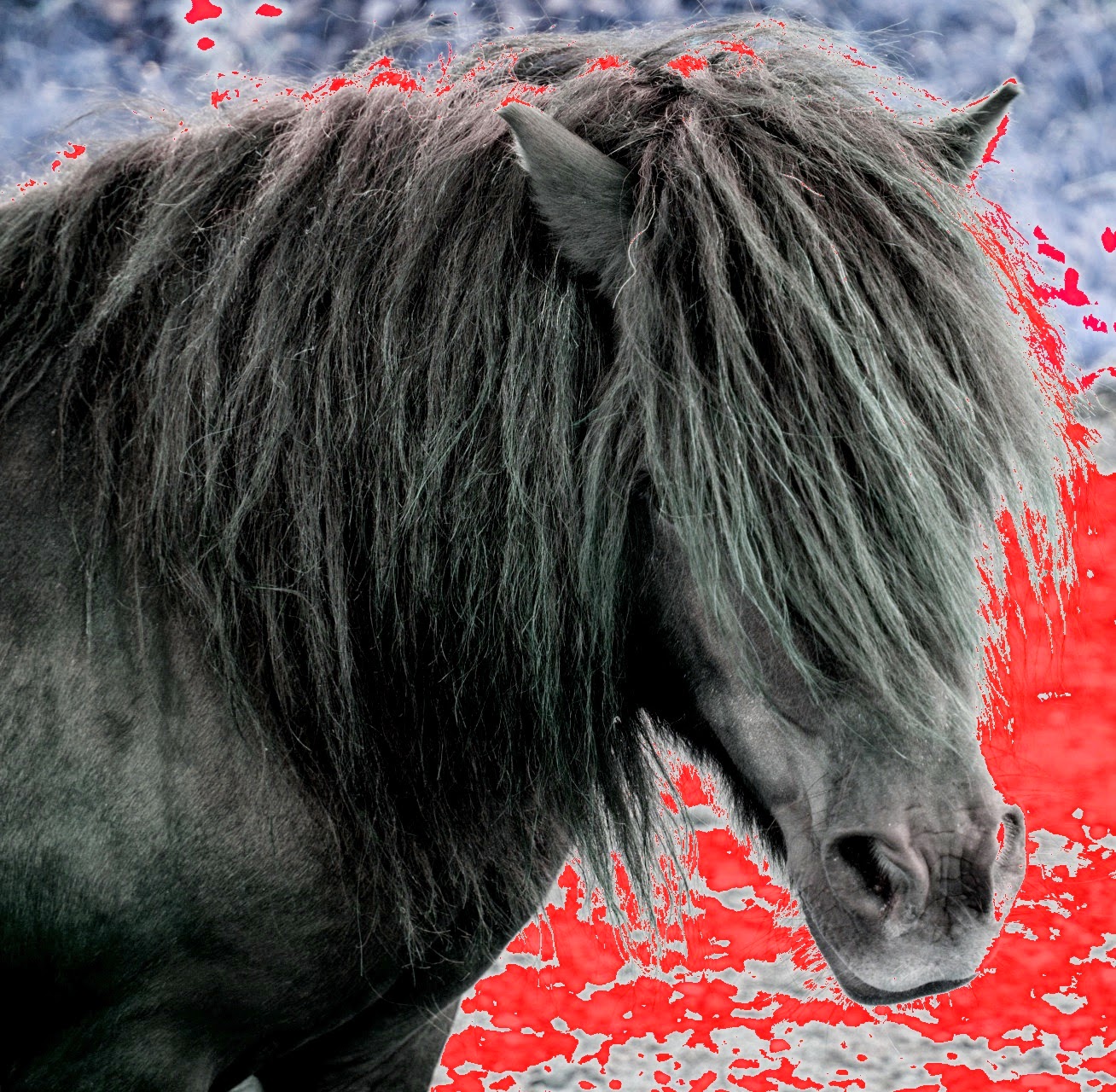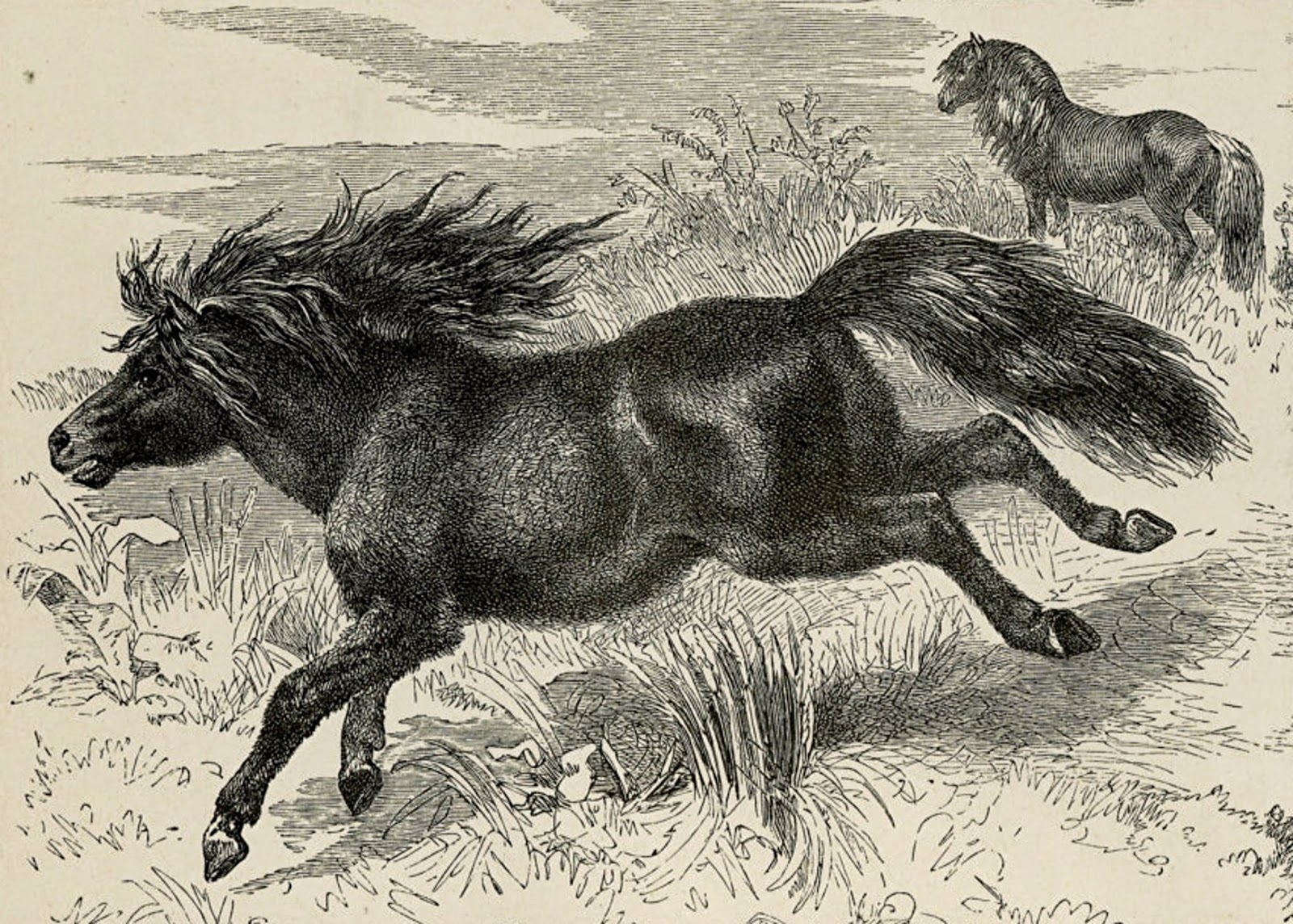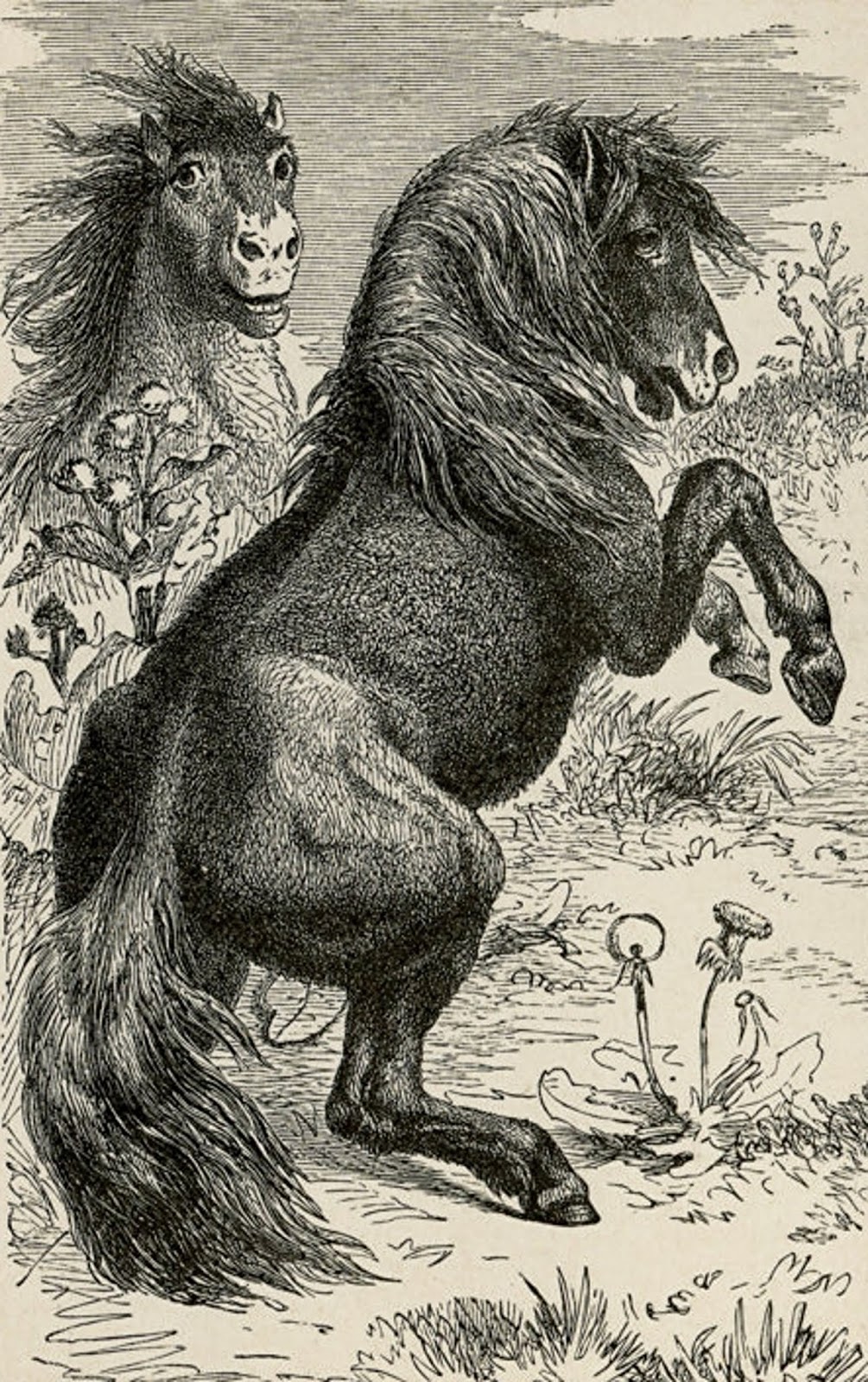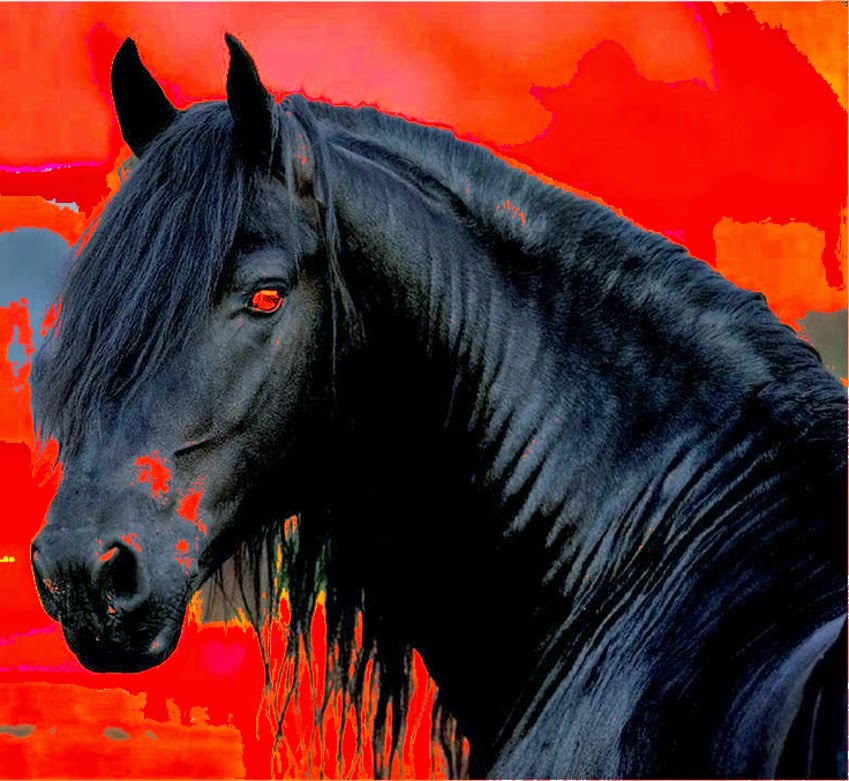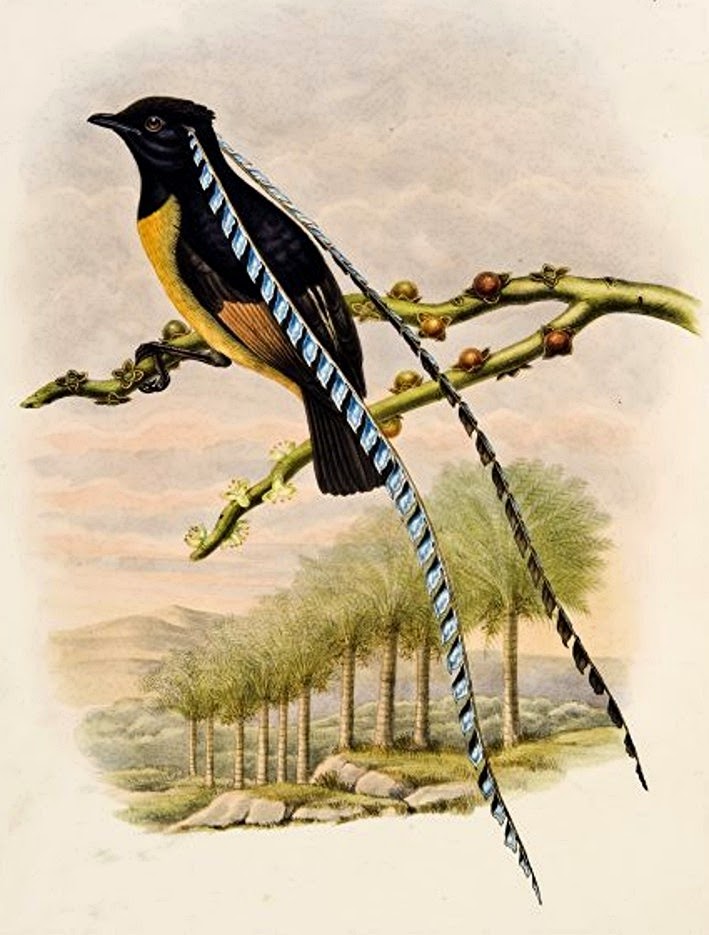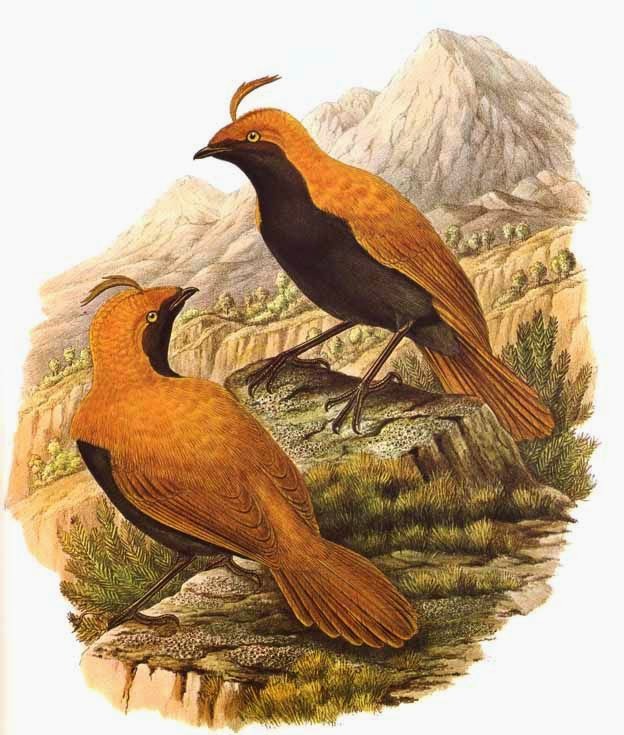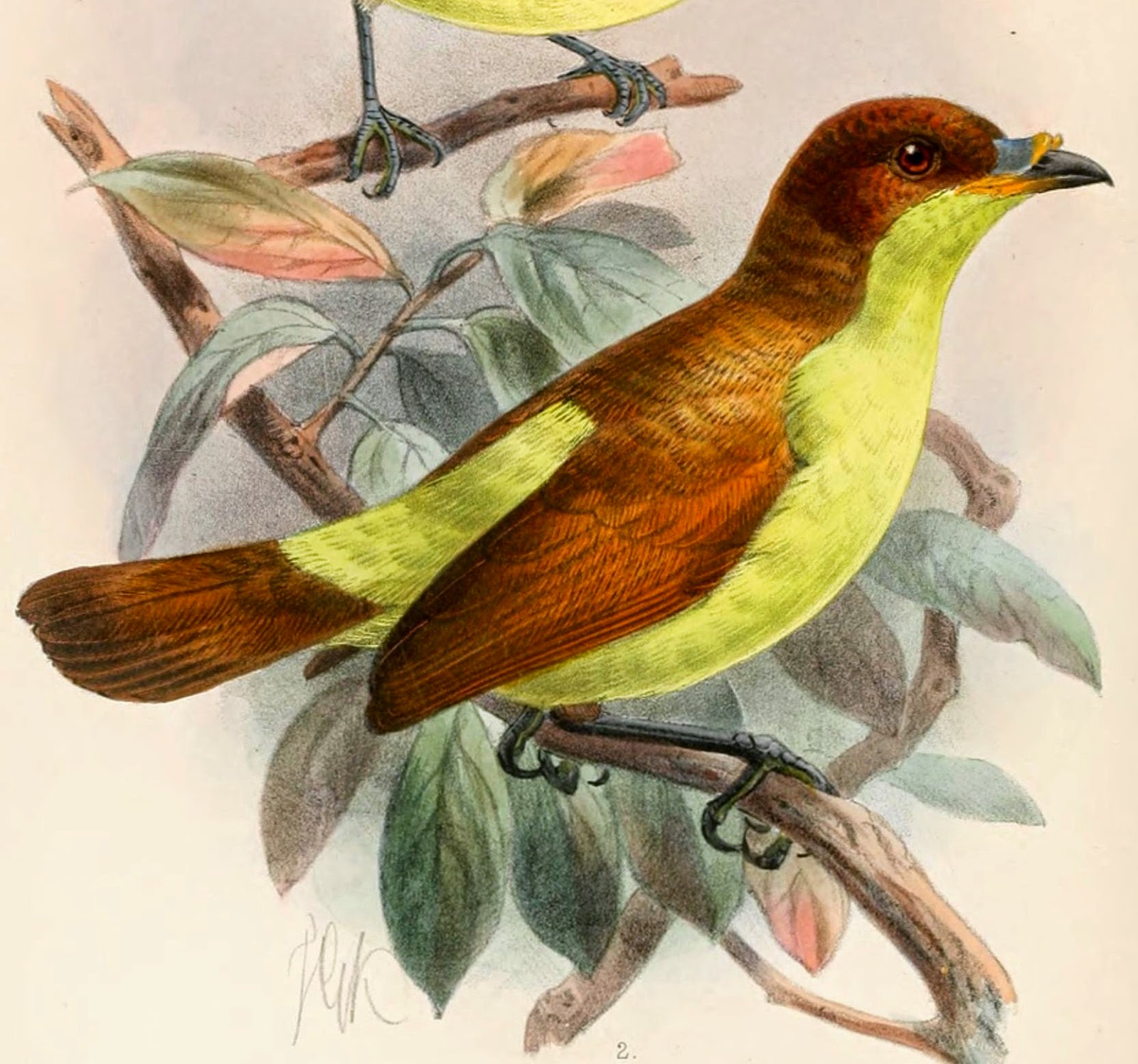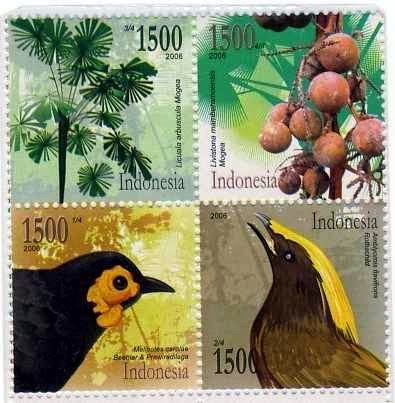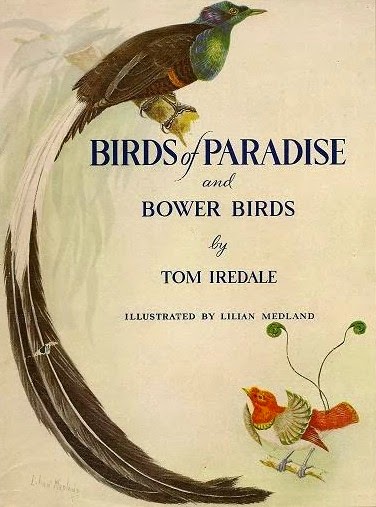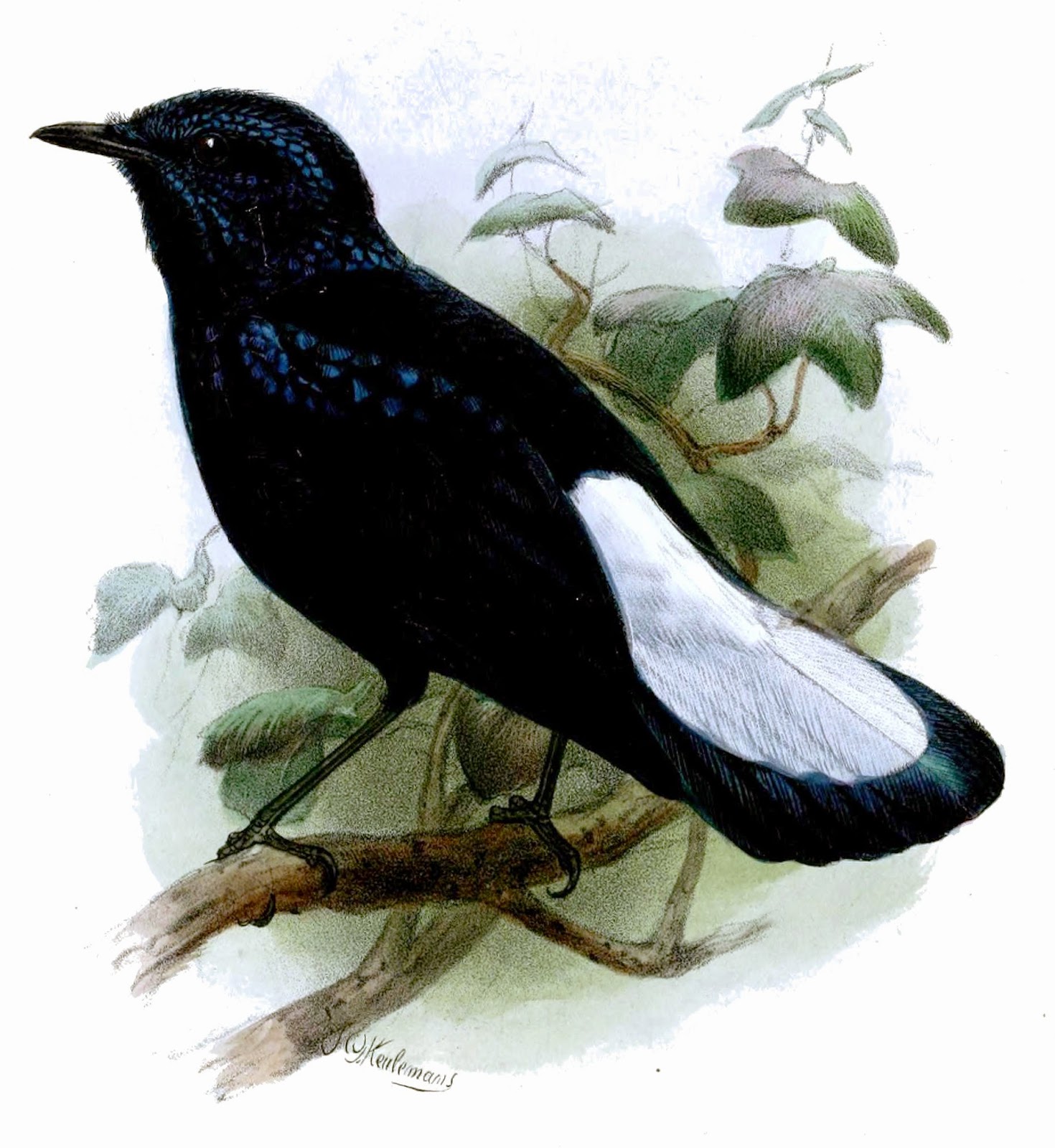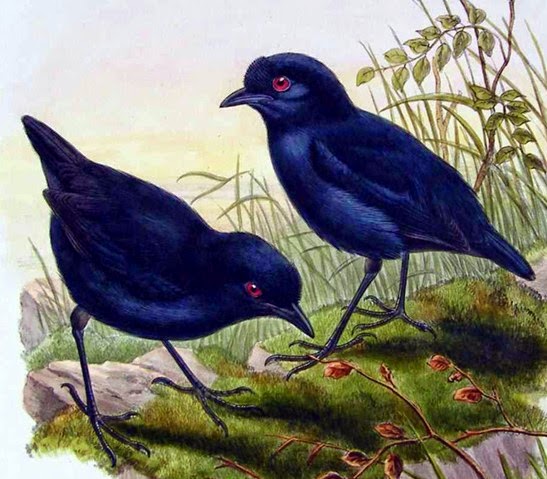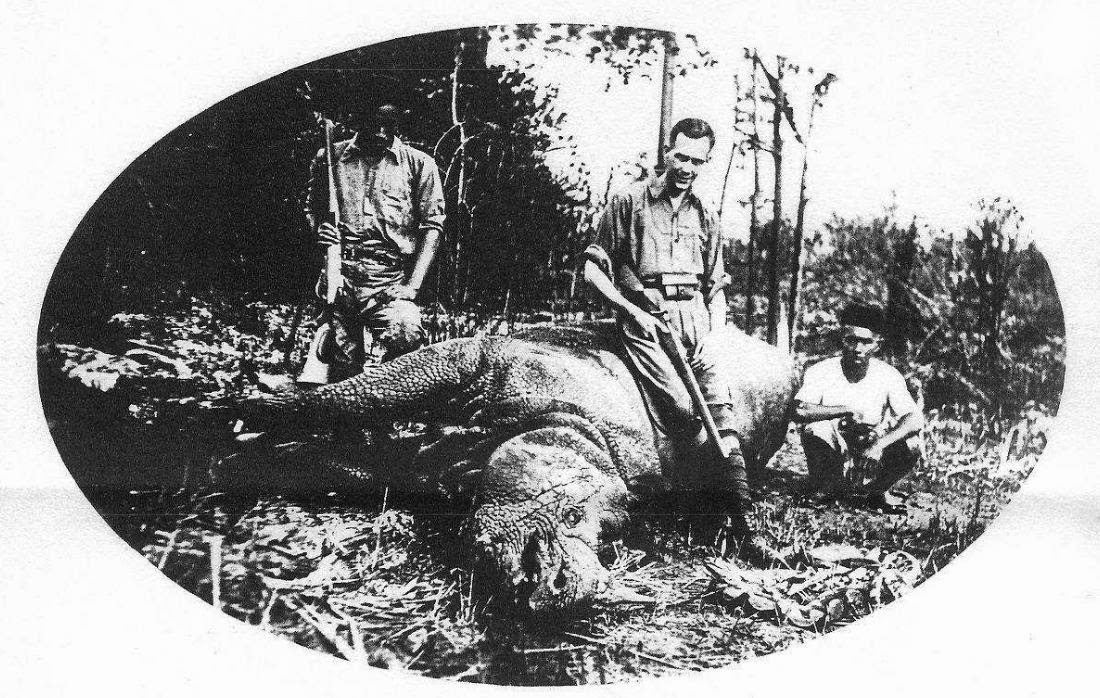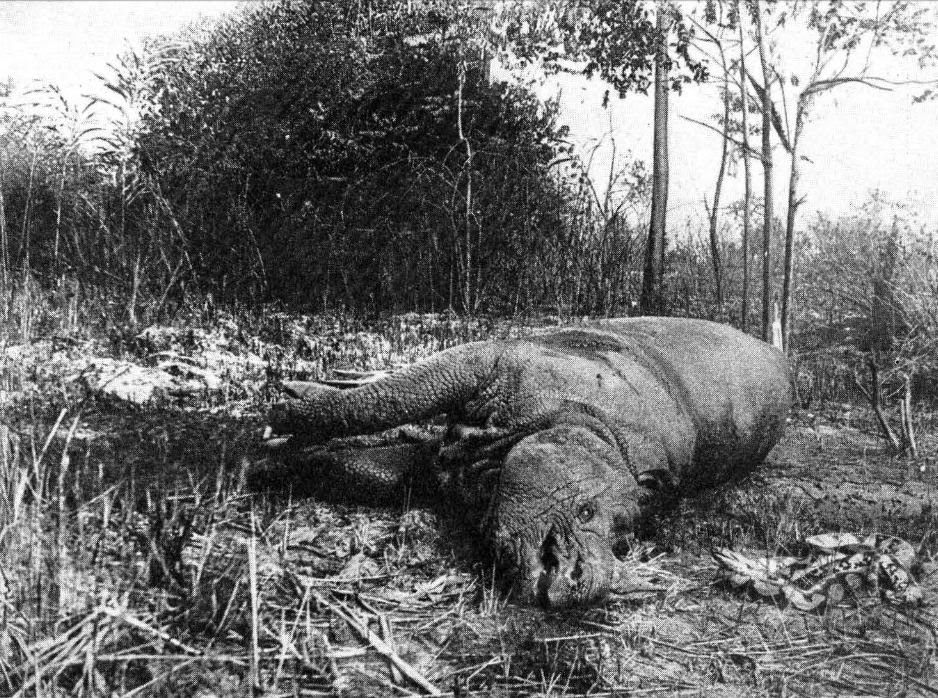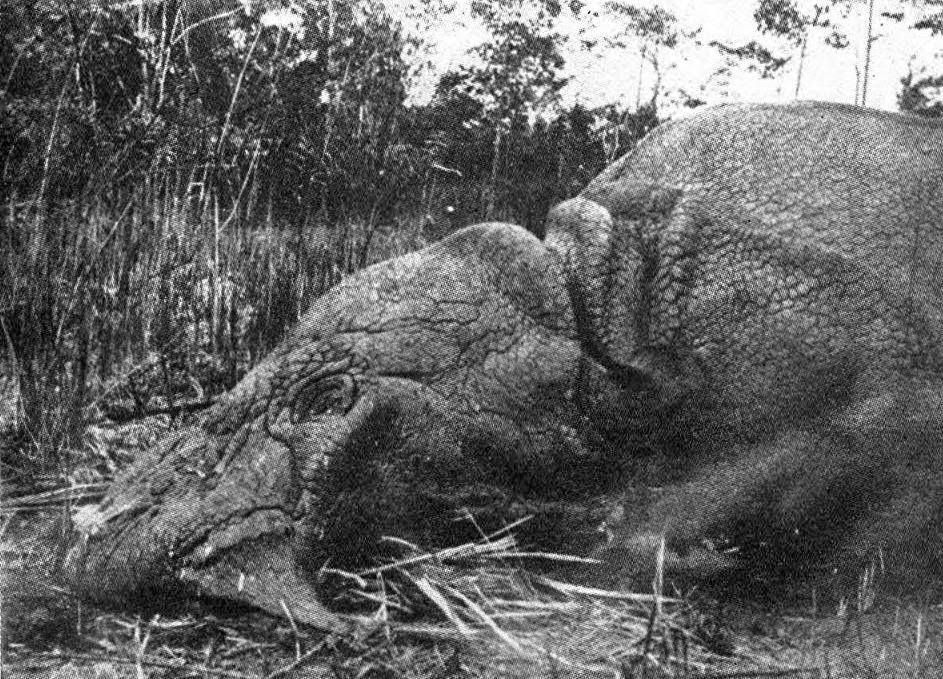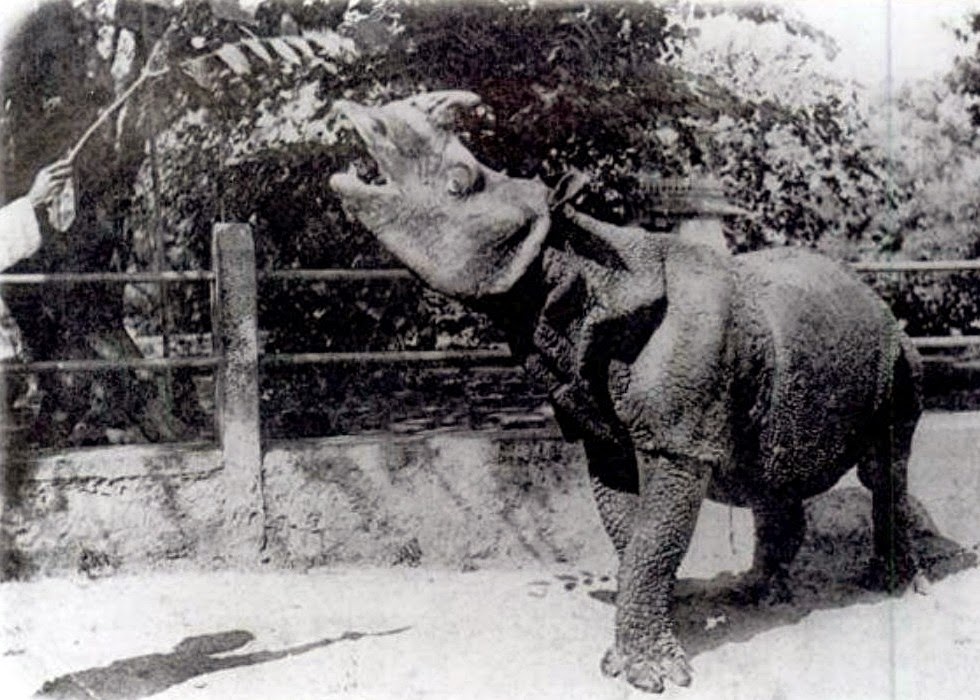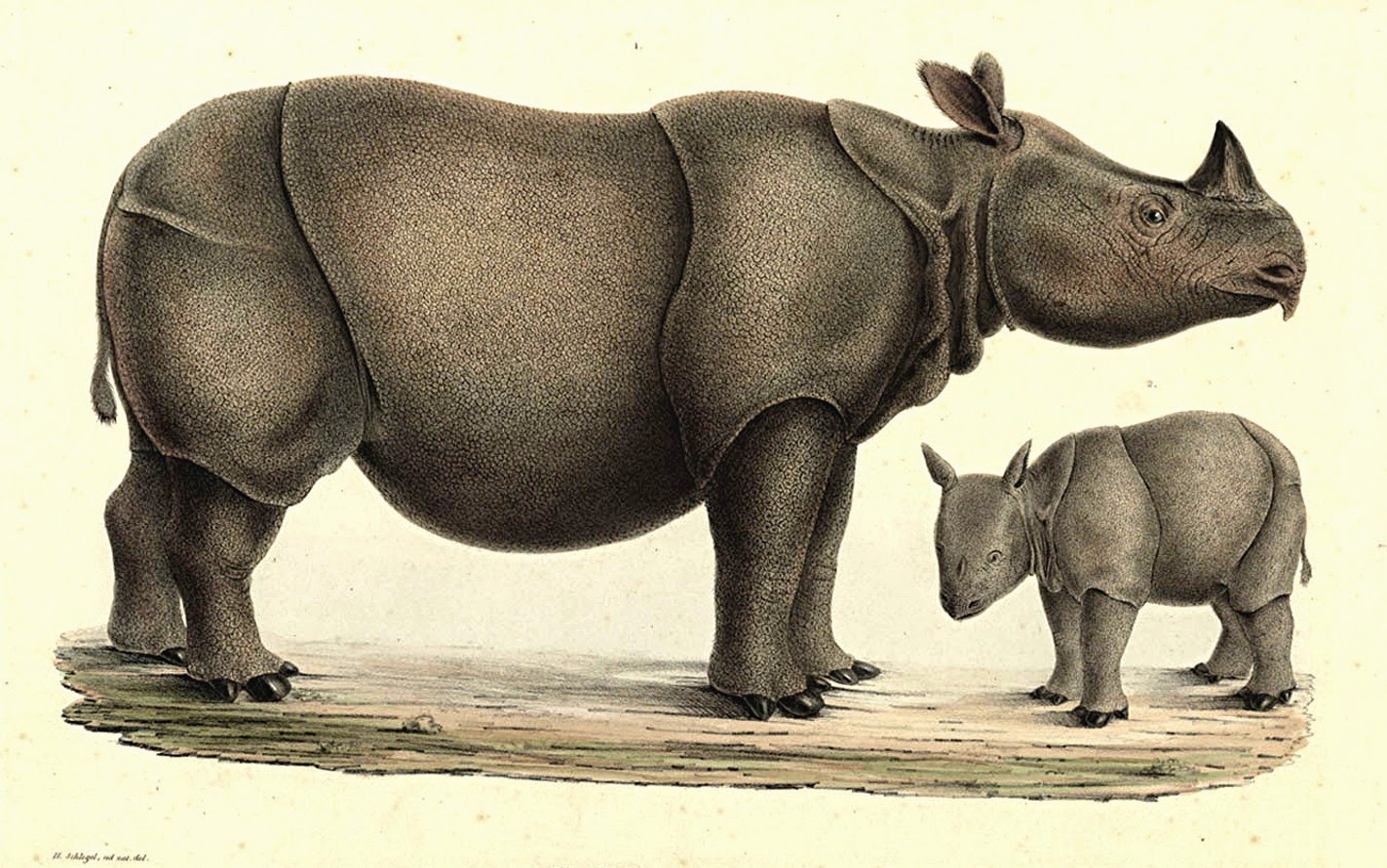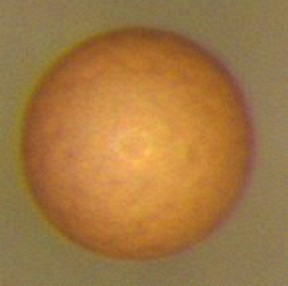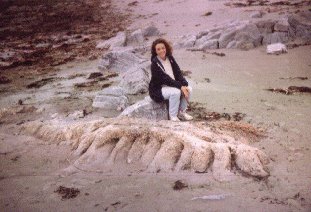The Mockery Bird by Gerald Durrell – Fontana paperback edition, 1990 (© Gerald Durrell/Fontana Books)
Today, there are numerous novels whose themes deal with cryptozoological beasts or scientifically-known but out-of-place animals, and many have become bestsellers, some even giving rise to blockbuster films too – but this has not always been the case. Decades ago, for every unequivocal success story like Sir Arthur Conan Doyle's The Lost World or Edgar Rice Burroughs's The Land That Time Forgot, there were other, less epic but no less interesting and certainly no less readable novels that for whatever reason(s) failed to attract widespread attention, and for the most part have long since faded to varying degrees into the forlorn mists of undeserved but inevitable literary obscurity and out-of-print status.
As a connoisseur of wildlife-related curiosities in whatever form they may take, over the years I've made a point of collecting – and reading, naturally – as many of these unfairly forgotten or tragically neglected works of natural history fiction as I could find. So here – in the hope that perhaps this much-deserved (albeit all-too-brief) return to the spotlight may help to introduce them to a whole new audience and gain for them a sizeable new fan base – is, in no particular order, a ShukerNature Top Ten of personal favourites of mine drawn from the somewhat esoteric literary genre of lesser-known vintage novels that contain a mystery creature or out-of-place (OOP) animal theme.
Or, to put it another, rather more concise way, here imho are ten of the best crypto-novels that got away.
Cat by Andrew Sinclair – Sphere paperback edition, 1977 (© Andrew Sinclair/Sphere Books)
CAT[vt THE SURREY CAT] – Andrew Sinclair (Michael Joseph: London, 1976)
Book blurb: The Cat was at large! The people of the quiet Surreyvillage of Wittlemead called it simply 'The Cat', for they could find no better words to describe the ravening black beast that prowled the nearby woods. The Cat was deadly, inexorable and fearless; no living thing, human or animal, was safe while it lived. Peter Gwynvor, Master of the local hunt, spearheaded the efforts to track down and kill the Cat before it could strike yet again. But as his campaign progressed he realised that the conflict between man and beast was merely a mirror for another, far deeper and more personal conflict within himself — a conflict he hardly dared acknowledge. The Cat had become the symbol of Peter's secret fears — and only when they met face to face, to kill or be killed, would those fears finally be resolved...
ShukerNature comments: Today, mystery cats are the subjects of many novels, for adults and children alike. A fair number of these have been set in Britain, but as far as I am aware this was the very first one. Without giving too much of the plot away, its ferocious feline antagonist is a highly exotic escapee originating in the steamy jungle marshes of Sumatra, the like of which has never before been seen in the West.
Rare Bird by Kenneth Allsop – Jarrolds hardback 1st edition, 1958 (© Kenneth Allsop/Jarrolds)
RARE BIRD– Kenneth Allsop (Jarrolds Publishers: London, 1958)
Book blurb: When Philip Parfitt, secretary of the local Natural History Society, finds black-winged stilts actually nesting near his Wiltshire home – the first time in Britain for 200 years – his village becomes almost a mad-house. Down come the London bird protectionists, TV units, nature broadcasters and publicists, an army of photographers, reporters and feature writers...all the mendicants of sensation.
Kenneth Allsop's experience of Fleet Street and his life-long interest in bird-life combine to give an unusually authentic country background to this extravaganza of the ballyhoo age, which might (almost) really have happened.
ShukerNature comments: Although the black-winged stilt Himantopus himantopus is an uncommon visitor to Britain, this very distinctive species of wader has bred here occasionally – namely, in Nottingshamshire during 1945, in Norfolk during 1987, and in both Kent and West Sussex during 2014.
Smith's Gazelle by Lionel Davidson – Book Club Associates hardback edition, 1972 (© Lionel Davidson/BCA)
SMITH'S GAZELLE– Lionel Davidson (Jonathan Cape: London, 1971)
Book blurb: Hamud the one-eyed Arab shepherd, righteous murderer of murderers, flees from retribution to the depths of a haunted ravine near the Palestine border. Instead of souls and djinns, he finds there only bones and boulders – and the last pregnant representative of an extinct species of gazelle named Smith. As animal and vegetable life prosper beneath his care, Hamud comes to see himself as the subject of divine grace: his unworthy life's mission, to repopulate with gazelles the Holy Land.
Lionel Davidson's new novel is a delightful entertainment – fresh, funny and wholly charming. He has created three of his most unforgettable characters: the wickedly wise small boy, the delicate – but so prolific – gazelle and the indomitable old man, toiling like an Old Testament archetype in his flowering ravine.
ShukerNature comments: Although Smith's gazelle is a fictitious species, there is at least one bona fide mystery gazelle – the red gazelle Eudorcas rufina. This enigmatic species has never been reported in the wild state, and is known to science only from three museum specimens that were purchased in various markets in Algiers and Oran, northern Algeria, during the late 19th century. Following scientific examination, one of these specimens was unmasked in 2008 as being a specimen of the red-fronted gazelle E. rufifrons.
The People of the Chasm by Christopher Beck – C. Arthur Pearson hardback 1st edition, 1923 (© Christopher Beck/C. Arthur Pearson Ltd)
THE PEOPLE OF THE CHASM– Christopher Beck (C. Arthur Pearson: London, 1923)
Book blurb: Dick and Monty Vince put their plane aboard the missing Anton Javelot's ship 'Penguin' and sail to Antarctica in search of him. They eventually locate Javelot inside a hidden verdant chasm populated by a tribe of friendly pygmies, a band of very unfriendly bipedal apes, and a diverse assortment of lethal monsters including giant arthropods and a terrifying species of rampaging man-eating mole-pig!
ShukerNature comments: The 'Lost World' sub-genre of cryptozoology-themed novel is represented in the present ShukerNature list by this gripping but long-forgotten volume, which contains some decidedly bizarre mystery creatures. 'Christopher Beck' was a pseudonym adopted by Thomas Charles Bridges (1868-1944), a prolific French-born UK writer who wrote many sci-fi novels and magazine articles, and spent several years in Florida.
Tiger in the Bush by Nan Chauncy – Puffin paperback edition, 1978 (© Nan Chauncy/Puffin Books)
TIGER IN THE BUSH– Nan Chauncy (Oxford University Press: Melbourne, 1957)
Book blurb:The Lorenny family lived in a secret valley, hidden so deep in the mountains that no map makers had discovered it, where the rarest creatures lived safe from the menace of hunters or the curiosity of scientists. It was, most of the time, a wonderful place, but there were drawbacks, especially for young Badge, the lonely one of the family, who had never met a stranger yet felt the need of companionship without realizing the hazards it could bring in such a very special place.
The crisis came when Dad and the others were away on a prospecting trip, and Badge and his mother were left in charge of the farm. Two friendly strangers appeared and asked to set up camp, and, fatally warming to their friendship and interest, Badge confided to them that the rarest animal of all, the nearly extinct Tasmanian tiger, could still be seen in the valley.
The moment he had spoken, he sensed the disaster and, desperate to find a way to undo the damage before the wild and splendid creature was outlawed or killed by too much interest, he embarked on the only plan he could think of, one that was to lead him into real danger...
ShukerNature comments: When this novel was written, it was still widely believed that the thylacine or Tasmanian tiger Thylacinus cynocephalus was merely very rare as opposed to extinct (its current official status, numerous unconfirmed sightings notwithstanding) – back then, the last confirmed specimen had only died 21 years earlier, in 1936.
The White Gorilla by Henri Vernes – Corgi paperback edition, 1967 (© Henry Vernes/Corgi Books)
THE WHITE GORILLA– Henri Vernes (Éditions Garard: Brussels, 1966)
Book blurb: In the heart of the Dark Continent lurked Niabongha, the white gorilla. Though the natives built images to him, there were vicious white hunters who wanted his life…
It was up to Bob Morane to capture the fantastic beast – and to capture it alive. And the dangerous quest meant a battle – not only with the jungle and its inhabitants, but also with his fellow man…
ShukerNature comments: Henri Vernes is the nom-de-plume of Charles-Henri-Jean Dewisme (b. 1918), an extremely prolific French author who has written over 200 action and science-fiction/fantasy novels. More than 50 of these star Bob Morane, a bold derring-do Indiana-Jones-type hero. Vernes's novel The White Gorilla was originally published in French as Le Gorille Blanc back in 1957, but by a remarkable coincidence, just a few months after it was first published in English in 1966 a real-life white gorilla, but only a baby one, was captured alive in the forests of Rio Muni, Spanish West Africa, after its normal-coloured mother had been killed. The only white gorilla ever confirmed by science, it was brought back to Barcelona Zoo in Spain where it was dubbed Little Snowflake and became a major international star for almost 40 years (click here for a full ShukerNature biography of this unique animal).
The Mockery Bird by Gerald Durrell – Collins hardback 1st edition, 1981 (© Gerald Durrell/HarperCollins)
THE MOCKERY BIRD– Gerald Durrell (Collins: London, 1981)
Book blurb: Peter Foxglove is sent to the island of Zenkali, a small British colony, as an assistant to the native King's (or, as he prefers to call himself, Kingy's) advisor. After meeting the many eccentric inhabitants of the island, he discovers that a thought-to-be-extinct bird, the Mockery Bird, worshipped as a deity by the island's native Fangoua tribe, is not so extinct after all. But the valley where the bird lives is about to be flooded to build a dam to provide energy for Zenkali's airport, and Peter and his friends need to stop this plan to save the bird.
ShukerNature comments: Gerald Durrell's non-fiction books documenting his family life and formative years as a young naturalist on the Greek island of Corfu, his many subsequent animal-collecting expeditions, and the establishment of his celebrated conservation-based zoo on Jersey are famous worldwide (My Family and Other Animals, The Bafut Beagles, Three Singles To Adventure, The Drunken Forest, Menagerie Manor– and many more), but it is not so well known that he has also written several excellent works of fiction, of which The Mockery Bird is a first-class example – slyly satirical, deftly incorporating a range of environmental and conservation issues, and, like all of his works, truly hilarious. Its avian star is a goose-sized, flightless species sporting blue plumage, long legs, and a large hornbill-like beak that bears a large hump in the male but only a small bony shield in the female. It earns its name from its call, which resembles loud mocking laughter.
The Turquoise Dragon by David Rains Wallace – The Bodley Head hardback 1st edition, 1985 (© David Rains Wallace/The Bodley Head)
THE TURQUOISE DRAGON– David Rains Wallace (The Bodley Head: London, 1985)
Book blurb:'I kicked my way to the shallows, stood up, and lifted from the water a creature that seemed made of turquoise and lapis lazuli, with ruby belly and topaz eyes. It was shaped more or less like a salamander, but it wasn't any species I'd seen...'
The Turquoise Dragon is a fast-paced adventure thriller with an ecological twist. George Kilgore, a forester living quietly in the foothills of California's rugged KlamathMountains, stumbles into a deadly web of intrigue when he discovers the body of a murdered biologist friend. With the uncomfortable feeling that homicide investigators have put him at the top of their list of suspects, Kilgore reluctantly begins his own investigation, compelled first by horror and then by growing curiosity.
David Rains Wallace has already been widely acclaimed as an award-winning nature writer and now, with The Turquoise Dragon, he has made an auspicious fiction debut. He skilfully interweaves deft prose, a highly individual storyline involving collectors of endangered species, cocaine-dealers and the exotic location of the Klamath mountain range, with a deep understanding of the wilderness.
ShukerNature comments: Although no turquoise-blue, ruby-red salamanders have been reported there in real life, the KlamathMountains include the Trinity Alps – which are famous among crypto-herpetologists as the reported home of an alleged undescribed species of giant salamander. This mystery beast was famously sought, albeit unsuccessfully, by the millionaire crypto-enthusiast Tom Slick, but during the expedition an elderly local man was interviewed who claimed that in his youth he had seen several salamanders as big as alligators on the shore of a lake there.
Brother Esau by Douglas Orgill and John Gribbin – Sphere paperback edition, 1983 (©Douglas Orgill and John Gribbin/Sphere Books)
BROTHER ESAU– Douglas Orgill and John Gribbin (The Bodley Head: London, 1982)
Book blurb: Turned towards them, seen more and more clearly as the flare sank towards the ground, was a face. In the bluish light the teeth seemed to be bared. The face was broad and hairy with a flattened nose, and heavy brow-ridges. The reddish hair which fringed it grew thickly round the large ears and head. As the light from the slowly sinking flare became more intense Harry saw that the desperate eyes were fixed on his. For a moment an extraordinary sense of urgent communication filled his mind...It was something like a gorilla, something like a man covered in hair. It was hard to estimate height while the creature was still crouched in the shadows, but it was probably around six feet. The body was barrel shaped, squat and obviously powerful...
The Earth does not belong to man alone. The Himalayas bury their secrets well. Two skulls unearthed in the cradle of the human race — the remote heights of Kashmir— throw evolutionary theory into chaos. But a far more disturbing secret lies hidden deep in the bleak mountains and snow-swept valleys unseen by human eves.
A few miles from the explosive triangle of tension where Afghanistan and Pakistan border on India the story of the century breaks. And the echoes of the most shattering revelation yet made to man threaten to plunge the world into total war which will turn the cradle of the human race into its final grave.
ShukerNature comments: This was the first cryptozoology novel with a man-beast theme that I ever read, and it remains one of my favourites. Its title derives directly from the Biblical account of Jacob and his twin brother Esau, who was hairy all over. Some cryptozoologists believe that this story is evidence for the existence of two separate human species – our own Homo sapiens and a distinct, hirsute species traditionally referred to as the wildman.
The Last Great Auk by Allan Eckert – Collins hardback 1stedition, 1964 (© Allan Eckert/HarperCollins)
THE LAST GREAK AUK– Allan Eckert (Collins: London, 1964)
Book blurb:EddeyIsland loomed ahead of them like a gigantic red iceberg jutting from the frigid grey waters of the North Atlantic. Dimly in the haze behind it the swimmers could see the desolate coastline of south-western Iceland…There were more than eighty birds in this flock, and they spread out haphazardly in loose clusters which trailed behind the lead bird to a distance of nearly half a mile. The great auks had come home.
The great auks were handsome penguin-like birds with head, neck, back and wings a deep glossy black, and underside a startling white. With tiny wings, they were the only flightless birds of the North Atlantic, but with their powerful legs and large webbed feet they swam and fished wonderfully.
Mr Eckert has reconstructed with great skill and compassion the story of the great auks' last annual migrations between EldeyIsland where they bred, off southwest Iceland, and South Carolina where they wintered. Each journey meant an almost incredible swim of three thousand miles. On the island and along the migration route lurked many perils—storms, killer-whales, fish-hooks, scientists, and worst of all, the murderous onslaught of feather and meat hunters. The story is that of the last of these birds, from his hatching and his adventures as a fledgling until as leader of the dwindling flock he returns to Eldey for the last time. By then the reader is hoping against what he knows is inevitable, against what did happen on June 3rd, 1844. The species became extinct. One species out of 8,000—does it matter? It does, and no reader of this sad and beautiful novel will forget it.
ShukerNature comments: Whereas its flightless feathered subject is itself neither strictly cryptozoological nor out-of-place, this novel is so remarkable a work that it definitely deserves to be read by as wide and as numerous an audience as possible, its poignant story a terrifying reminder of what has happened – and is still happening – to so many extraordinary animals at the hand, rifle, machete, chainsaw, and introduced livestock of humankind. Moreover, and where this novel is definitely pertinent to cryptozoology, the grim prospect of losing remarkable animal species to extinction before science has even confirmed their existence still lingers and overshadows conservation efforts like a dark, brooding wraith – one that can only be dispelled forever if future generations read books like this one, and take heed of its message.
Last of the Curlews by Fred Bodsworth – Dodd, Mead paperback edition, 1955 – another, more famous novel dealing with a once-common species (this time the eskimo curlew Numenius borealis) now confronting seemingly-inevitable extinction (© Fred Bodsworth/Dodd, Mead & Company)
